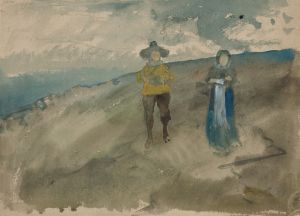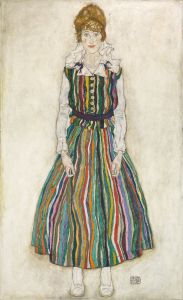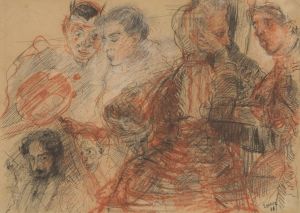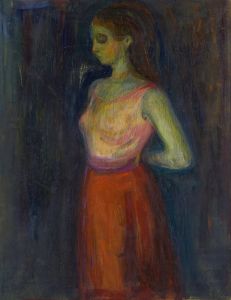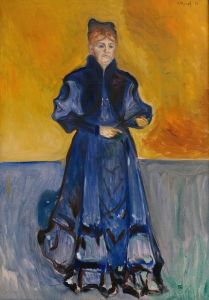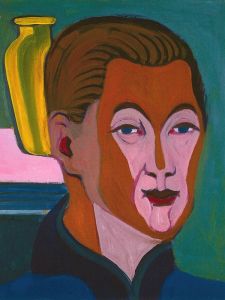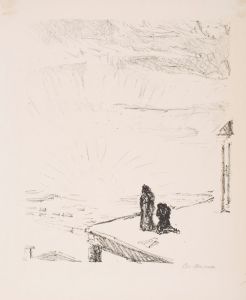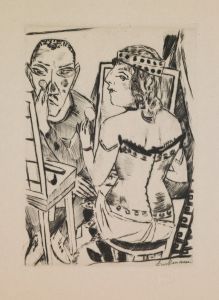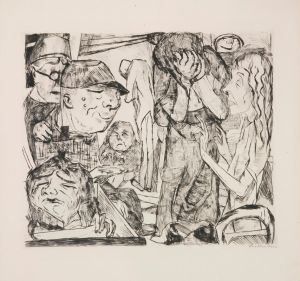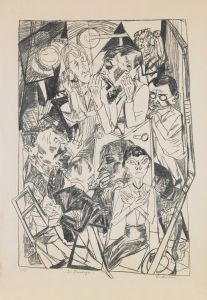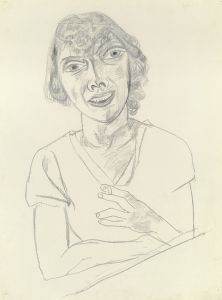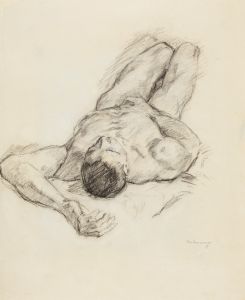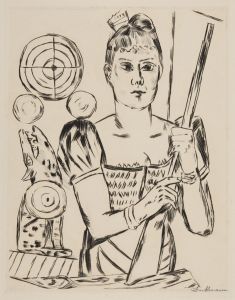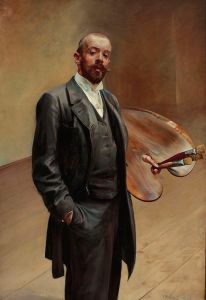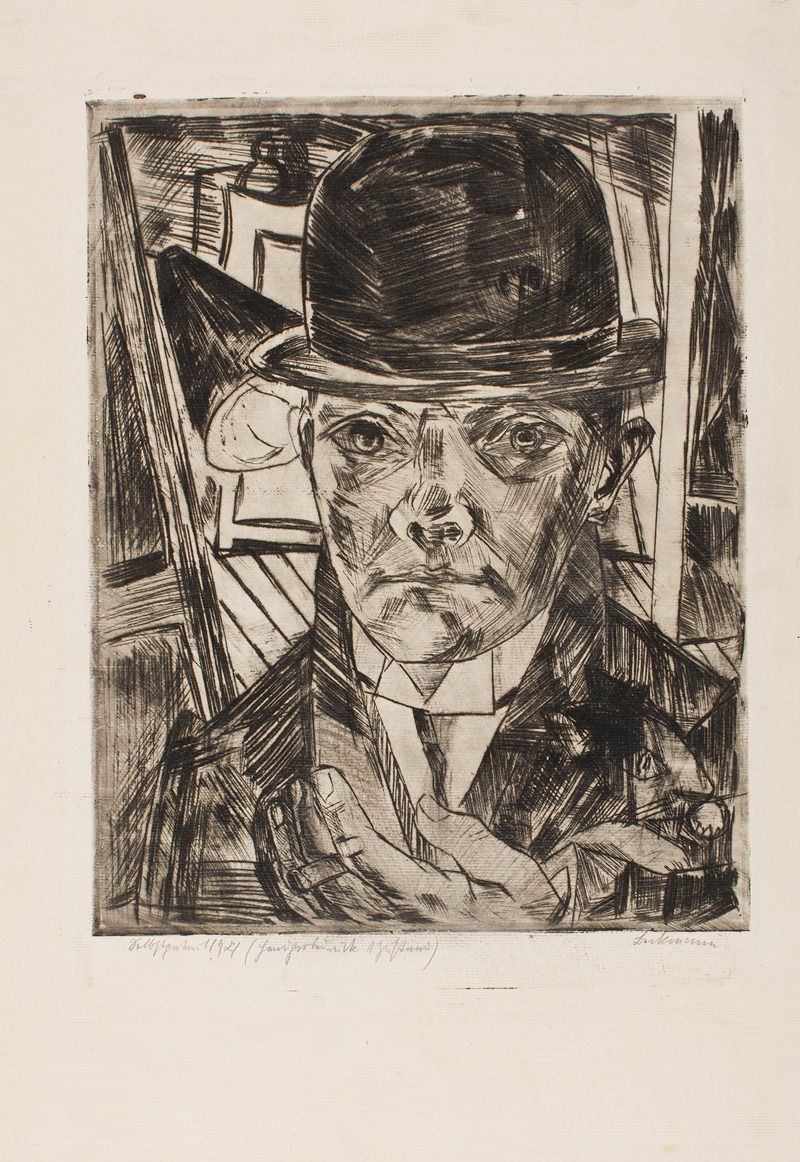
Self-Portrait in Bowler Hat
A hand-painted replica of Max Beckmann’s masterpiece Self-Portrait in Bowler Hat, meticulously crafted by professional artists to capture the true essence of the original. Each piece is created with museum-quality canvas and rare mineral pigments, carefully painted by experienced artists with delicate brushstrokes and rich, layered colors to perfectly recreate the texture of the original artwork. Unlike machine-printed reproductions, this hand-painted version brings the painting to life, infused with the artist’s emotions and skill in every stroke. Whether for personal collection or home decoration, it instantly elevates the artistic atmosphere of any space.
"Self-Portrait in Bowler Hat" is an oil painting created by the German artist Max Beckmann in 1921. Beckmann, born on February 12, 1884, in Leipzig, Germany, is considered one of the most important painters of the 20th century, known for his unique style that blends elements of Expressionism and New Objectivity.
The painting depicts Beckmann himself, wearing a bowler hat, which was a popular fashion accessory in the early 20th century. The bowler hat, also known as a derby hat, is a hard felt hat with a rounded crown, originally created in 1849. In this self-portrait, Beckmann presents himself with a serious and somewhat introspective expression, which is characteristic of many of his self-portraits.
Beckmann's use of bold lines and stark contrasts in "Self-Portrait in Bowler Hat" reflects his mature style, which had evolved significantly from his earlier works. The painting is notable for its psychological depth and the way it captures the artist's complex personality. Beckmann often used self-portraits as a means of exploring his own identity and the human condition, and this work is no exception.
The background of the painting is relatively simple, which helps to focus the viewer's attention on Beckmann's face and the bowler hat. The use of dark, muted colors is typical of Beckmann's palette during this period, and it adds to the somber and contemplative mood of the piece.
Max Beckmann's career was profoundly affected by the political and social upheavals of his time. He served as a medical orderly during World War I, an experience that had a lasting impact on his work. After the war, he became associated with the New Objectivity movement, which sought to depict the realities of life with a detached and often critical eye.
In 1933, when the Nazis came to power in Germany, Beckmann's art was labeled "degenerate" because it did not conform to the regime's ideals. He was dismissed from his teaching position at the Städelschule in Frankfurt and many of his works were removed from German museums. Beckmann subsequently moved to Amsterdam in 1937, where he continued to work in relative isolation until the end of World War II.
After the war, Beckmann emigrated to the United States in 1947, where he took up teaching positions at Washington University in St. Louis and later at the Brooklyn Museum Art School in New York. He continued to paint and exhibit his work until his death on December 27, 1950.
"Self-Portrait in Bowler Hat" remains one of Beckmann's most iconic works, exemplifying his ability to convey deep emotional and psychological states through his art. The painting is held in high regard and continues to be studied and admired for its artistic and historical significance. It is part of the collection of the Neue Galerie in New York, which is dedicated to early 20th-century German and Austrian art.





